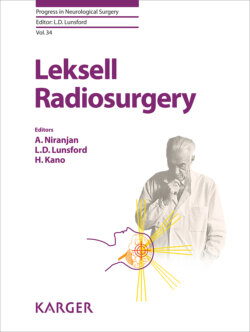Читать книгу Leksell Radiosurgery - Группа авторов - Страница 39
На сайте Литреса книга снята с продажи.
The ICON Technology
ОглавлениеThe best part of the ICON technology remains its underpinning as a full Perfexion device. This device solved many problems related to earlier generation Leksell SRS technologies [1]. Among the revolutionary features that began with the Perfexion model were an expanded intracranial reach, greater patient weight restrictions (250 kg), greater shielding for less radiation exposure to patients and staff, mixed isocenter shots that allow interchangeable beams of 4, 8, and 16 mm in one of the 8 beam sectors of each isocenter, and selective sector blocking to improve the selectivity of dose delivery [2]. It expanded the range of targets reachable without collision (from approx. C2 inferiorly to the skull vertex in the Z plane, almost all lesions in the anterior posterior or Y plane, and all lesions in the left right or X plane). Some collisions can be solved by using different gamma angles in Perfexion. For example, far anterior targets may require hyperextension of the neck (72° gamma angle) whereas some far posterior targets may be reached using a flexion gamma angle (110°). Using frame-based techniques, all targets must be located above the base ring of the stereotactic coordinate frame, which is typically placed very low on the head such that the base ring is at approximately the level of C2.
The ICON modification adds a CBCT to provide a three-plane representation of the patient cranial vault, which defines the stereotactic space during the actual procedure. A specially constructed thermoplastic mask provides immobilization of the patient’s head, which is further supported by a moldable head support. Imaging of the brain may be done with CT or MRI and can be performed prior to or during the actual stereotactic procedure. The patient’s radiosurgical dose plan is created on these images, which are then co-registered to the first (planning) CBCT images, which determine the reference coordinates in the Leksell space. After a second (Treatment) CBCT and finalization of the planned procedure, the radiation dose is delivered using the non-invasive mask immobilization while detecting any patient motion using an Intrafraction patient motion management system (IFMM). During ICON mask SRS a small reflective fiducial marker is placed on the nose and its relationship to two detectors on either side of the patient’s head allow detection of motion [3]. The resolution of detection is 0.1 mm in space and about 1 s in time. The threshold (to interrupt treatment) can be set to as low as 0.5 mm or as much as 3 mm.
